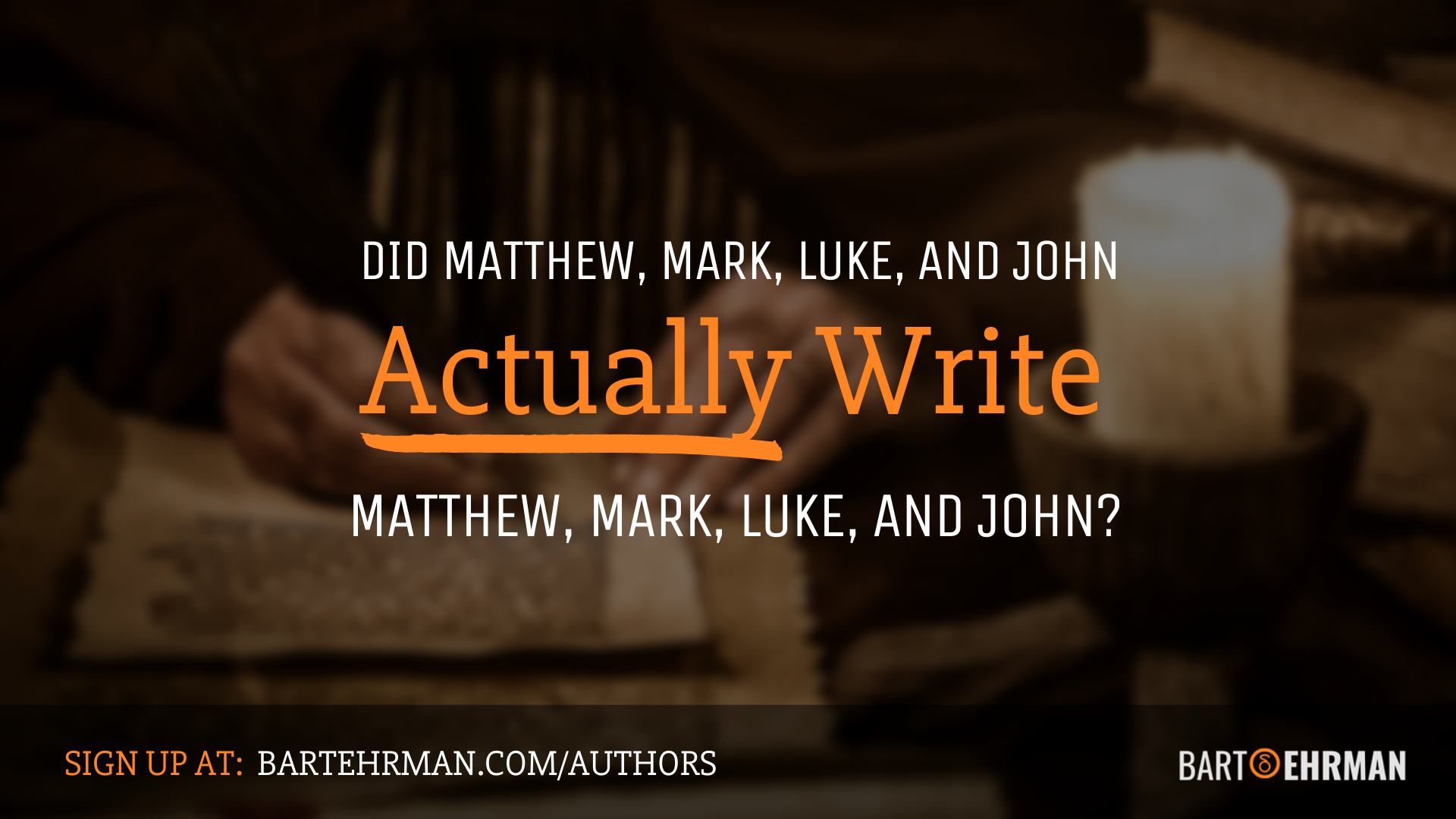When Was The First Bible Written? THE COMPLETE "ORIGIN STORY" (WITH TIMELINE)

Written by Marko Marina, Ph.D.
Author | Historian
Author | Historian | BE Contributor
Verified! See our guidelines
Verified! See our editorial guidelines
Date written: September 8th, 2023
Disclaimer: The views and opinions expressed in this article belong to the author and do not necessarily match my own. - Dr. Bart D. Ehrman
"When was the first Bible written?" This seemingly straightforward question unravels a journey through the corridors of time, leading us into the intricate and captivating history of the Christian Bible.
From the oral transmissions and the earliest manuscripts that have withstood the passage of ages, to the momentous influence of the printing press and the King James Version, every facet of the Bible's origins has left an indelible mark on the trajectory of faith, scholarship, and tradition.

A COMPLETE TIMELINE OF THE BIBLE'S "ORIGIN STORY" AND SIGNIFICANT EVENTS
| Key Event | Date or Approximate Date | Significance |
|---|---|---|
| Oldest Texts Written (Isaiah, Amos) | 8th Century B.C.E. | Earliest Biblical Texts |
| Book of Daniel Penned | 2nd Century B.C.E. | Recent Hebrew Bible Entry |
| Pauline Letters Written | 49 - 62 C.E. | Early Christian Literature |
| Gospels Composed | 70 - 95 C.E. | Accounts of Jesus' Life |
| Last Books of the Bible Written | Early 2nd Century C.E. | Final Biblical Texts |
| First New Testament Fragment (P52) Dates | 2nd Century C.E. | Oldest NT Fragment |
| First Use of Codices | 1st and 2nd Century C.E. | Shift from Scrolls to Books |
| Earliest Complete Bible Manuscripts | 4th Century C.E. | Most Complete Bible |
| Invention of the Printing Press | 15th Century | Mass Production Begins |
| King James Version Published | 1611 | Influential English Translation |
The Birth of the Christian Bible
Before we answer the question, “when was the first Bible written,” we must define what we mean by “Bible.”
This is not a trick.
As mentioned in my previous article, the Christian Bible consists of the Old Testament (Hebrew Bible) and the New Testament. The Hebrew Bible on its own, however, is the religious cornerstone of the Jewish people. It was composed over several centuries.
The oldest texts, Isiah and Amos, trace back to the 8th century B.C.E. On the other end, the Book of Daniel penned in the 2nd century B.C.E., marks one of the more recent entries in the Hebrew Bible.
However, the contemporary notion of the "Bible" encompasses the broader compilation of 66 books, now commonly associated with the inclusion of the New Testament. This Christian Bible is the “Bible” we will focus on in this article.
Join me as we delve into the origins of the Bible by looking more closely at the formation of the Christian Bible. Don’t worry. We will deal with the Old Testament in another article!
To understand how old the Christian Bible is, we have to consider the formation of the New Testament.
Understanding the genesis of the New Testament requires us to delve into the backdrop of a divided 1st-century Judaism. To unravel this convoluted process, we must contrast the circumstances surrounding the creation of the earliest Christian literature with the origins of the Torah (Hebrew Bible).
Hebrew vs. Christian Bible: Looking at the Development Differences
#1 - Short Timeframe for the New Testament Writing
In contrast to centuries of community life in Ancient Israel, Christianity produced its formative literature within roughly 70 years.
That is, from the death of Jesus in the 30s, through the Pauline letters written between 49 and 62 C.E. and the Gospels composed between 70 and 95 CE, to the last books of the Bible written at the beginning of the 2nd century.
Did you know most historians believe that Matthew, Mark, Luke, and John didn’t write the Gospels in the New Testament? Are you curious to delve into a deeper understanding of the Gospel authorship? Join a free 50-minute lecture by Dr. Bart Ehrman.
#2 - Widespread Literature of the New Testament
In opposition to the literature formed within a specific nation of people (Israelites), the New Testament emerged from the religious claims of a tiny Jewish sect and scattered Gentile converts who lived across the Mediterranean.
#3 - Written in Greek
Thirdly, unlike the Hebrew Bible, the New Testament was written entirely in Greek. Moreover, the first Christians used as Scripture the Greek translation of the Hebrew Bible called Septuagint.
The prime example of how translation can influence the development of the Bible is the story of the virgin birth in the Gospel of Matthew.
In The Birth of Messiah, Raymond Brown explains how it was partly based on a misreading of Isaiah 7:14. As it turns out, the author of Matthew misread it because he used the Greek translation of Isaiah, not the Hebrew original.
Early Manuscripts and Fragments: Origins of the Bible
There are also some points of similarities to the development of the Hebrew Bible. Take, for instance, the fact that both the oral and scribal activities were involved in the composition of the New Testament and the Hebrew Bible.
However, it is not always possible to distinguish them clearly. In the ancient world, both activities went together.
There is, for example, evidence that Paul’s letters originated within the oral practice. Namely, Paul dictated his letter to a scribe who wrote it. After his letter reached a community, it would have been read out loud to the gathered believers.
How many years ago was the Bible written? The earliest New Testament fragment (P52) dates to the 2nd century C.E. As you can see in the picture below, the fragment is the size of a credit card and it contains several lines from the 18th chapter of John.
The question of who wrote the original Bible leads us to a more careful examination of the surviving manuscripts of the New Testament. The earliest are usually fragmentary and contain only small parts of the New Testament. Take, for instance, P15 - an early Greek manuscript that contains only portions of 1 Corinthians. Most scholars date it to the 3rd century C.E.
These manuscripts were written on papyrus. Papyrus sheets were then joined together horizontally to form scrolls. However, Christians soon changed their habits and precipitated a revolution in writing style.
From Scroll to Codex: The History of the Bible
To explore the origins of the Bible is to enter into the world of late antique codices. As decades went by, Christians decided to write Scripture on the codex rather than the scroll.
Scrolls had several practical disadvantages. You could write only on one side, and texts were limited by the length of the scroll. Furthermore, specific passages could be found only by “unscrolling”.
Did you know that the Latin word explicare (“to explain”) derives from a verb that means “to unfold”? Explaining something was intrinsically related to the act of unfolding a scroll!
The codex, on the other hand, is a compilation of “pages” (usually of papyrus), but folded and stitched together in quires to form a “book” in the modern sense. The codex was cheaper, more mobile, could contain more text, and allowed easier access to specific passages in a composition.
The codices appeared for the first time in the 1st and 2nd centuries C.E. and they quickly became particularly associated with Christian literature.
The Database of Ancient Books reveals captivating insights:
The earliest almost complete Bible manuscripts (in the form of codex) date to the 4th century C.E. They contain most of the books of both the Old and the New Testament. They are:
- 1Codex Vaticanus
- 2Codex Sinaiticus
- 3Codex Alexandrinus
- 4Ephraemi Rescriptus
Textual Similarities and Differences: Did Scribes Make Mistakes?
Before the advent of printing in the 15th century, the Bible was painstakingly transcribed by hand. Furthermore, we have no original manuscripts of any biblical books. All we have are later copies written by different scribes! Therefore, the question of who wrote the original Bible evades a straightforward response.
A scribal culture grew up in the royal courts of the ancient Near East (including Israel) that drew its prestige from the rarity, expense, and importance of writing. The written word, with its capacity for enhanced control and steadfast consistency, offered an advantage beyond the realm of oral transmission.
However, changes could not be entirely avoided. The process of manuscript copying was fallible because scribes would, whether unintentionally or intentionally, alter manuscripts in transmission.
Among unintentional errors are altering letters that sound alike, repeating or skipping words because of similarity in appearance, harmonizing with a similar text, or adding a previous scribe’s explanatory gloss into the body of the text.
Intentional changes are produced by scribes out of the conviction that the text should say something that the copy in front of them does not. Sometimes they were motivated by the doctrinal convictions of a particular scribe.
In The Orthodox Corruption of Scripture, Dr. Ehrman notes the infamous example of Jesus’ bloody sweat in the garden of Gethsemane (Lk 22: 43-44). It does not appear in several early manuscripts of Luke. The later scribe inserted this part to make Christ look more human.
Reason? To fight off a particular form of “heresy” called Docetism. Docetists rejected the idea that Jesus had a fully human nature. They believed that his human form was a mere semblance or illusion.
However, these variations were radically reduced with the emergence of writing systems in the 15th century. As Bart explains in Misquoting Jesus: “By printing books with moveable type, one could guarantee that every page looked exactly like every other page, with no variations of any kind.”
So, when was the Bible written? The earliest almost complete editions of the Christian Bible derive from the 4th century. However, at the early stage of the Reformation, one edition stood apart: The King James version.

King James Version and the Dawn of the New Age
The King James Version is one of the most well-known and influential English translations of the Bible. It holds a significant place in the history of Christianity, literature, and the English language itself.
It was commissioned in the year 1604, by King James I of England. The motivation behind its creation was to provide a new and accurate translation of the Bible into English. The King James Version was completed in 1611 and rapidly gained popularity.
Moreover, it played a pivotal role in shaping the English language itself. Many of its phrases and expressions have become idiomatic in English speech and writing.
Summing up Conclusions: The Origin of the Bible
When Was The First Bible Written? In our quest to trace the origins of the Christian Bible, we've embarked on a journey through the annals of history.
Through the lenses of composition, manuscript fragments, evolving formats, textual variations, and the profound impact of both the printing press and the King James Version, we've caught glimpses of the story behind the origin of the Bible.

